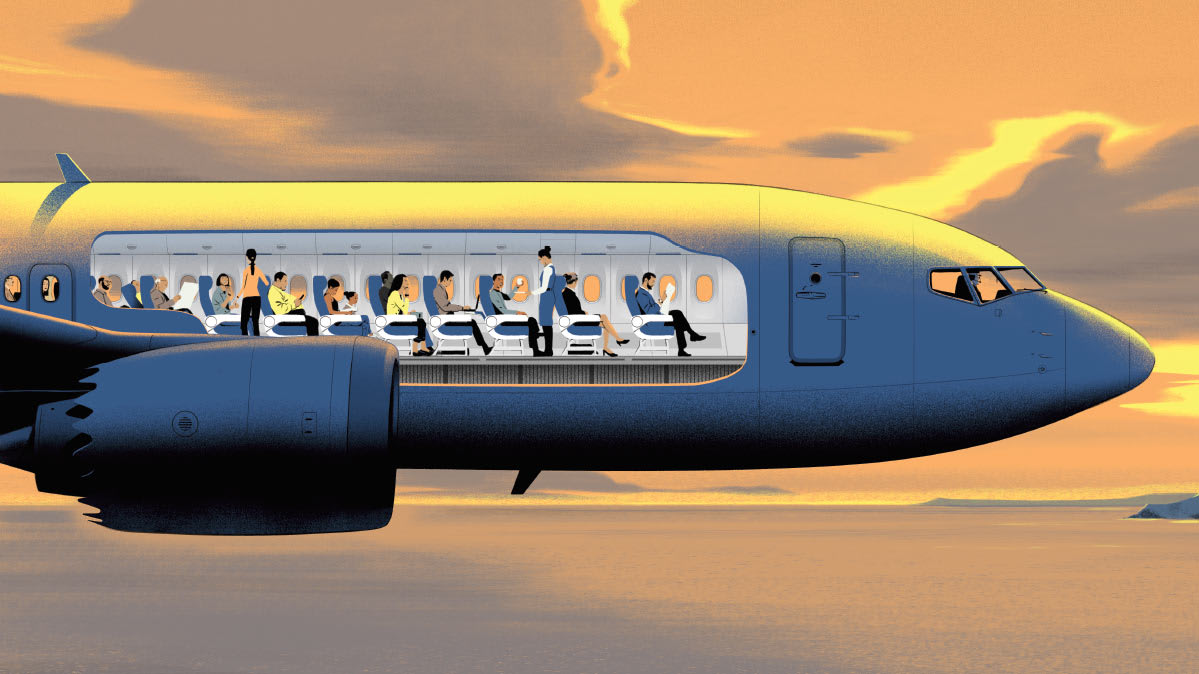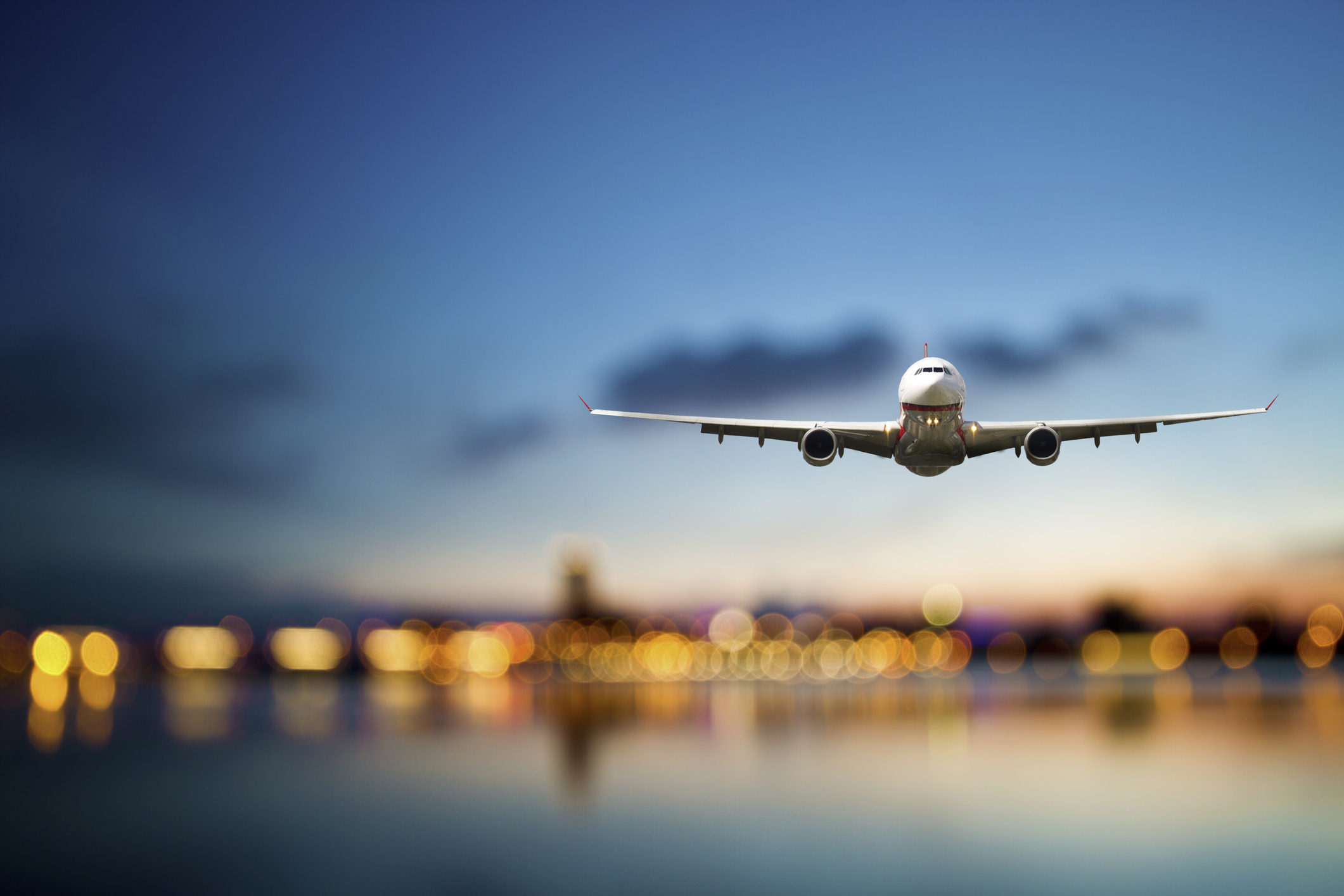How to snag deep discounts, get the best seat for your money, avoid nasty surprises, increase your comfort, and more

 In September, American Airlines began service from Miami to Los Angeles—a flight of just under 6 hours—on its Boeing 737 Max aircraft. The plane is a feat of aviation engineering that Boeing says is 14 percent more fuel-efficient and travels 600 nautical miles farther than earlier versions of the 737. It is also one of the most recent examples of how cramped air travel has become: It carries 12 more passengers (for a total of 172) than American’s other 737s, all of them shoehorned in by moving the seats closer together in all classes and shrinking the bathrooms so much that some people have reported difficulty turning around in them or washing their hands without getting soaked.
In September, American Airlines began service from Miami to Los Angeles—a flight of just under 6 hours—on its Boeing 737 Max aircraft. The plane is a feat of aviation engineering that Boeing says is 14 percent more fuel-efficient and travels 600 nautical miles farther than earlier versions of the 737. It is also one of the most recent examples of how cramped air travel has become: It carries 12 more passengers (for a total of 172) than American’s other 737s, all of them shoehorned in by moving the seats closer together in all classes and shrinking the bathrooms so much that some people have reported difficulty turning around in them or washing their hands without getting soaked.Even carry-on bags are getting less room: Alaska Airlines reduced the size of bags it allows onboard by 32 percent in June, and certain airlines won’t allow you to bring a carry-on at all unless you pay a fee.
But it’s not just irritations such as small bathrooms and vacuum-packed seating that make modern-day air travel so unpleasant. Planes today take off 85 percent full, according to the Department of Transportation, so there’s plenty of competition for space in overhead bins and little chance you’ll end up next to an empty seat. And as anyone who has purchased a ticket online knows, the price you wind up paying can bear little resemblance to the one that lured you in, once the numerous ancillary fees and other additional charges are factored in.
Flying wasn’t always so frustrating. Many of us fondly remember the days before deregulation, when the fare was the fare and airlines battled for our business by trying to out-pamper us. But with low-cost, no-frills carriers such as Allegiant, Frontier, and Spirit nibbling away at the market share of giants such as American, Delta, and United, these legacy airlines followed the lead of their low-cost competitors and began charging for niceties that were once included, such as allowing passengers to choose their seats or to carry on a bag. “They became ruthlessly focused on cost reduction,” says Samuel Engel, an analyst who leads the aviation group at consulting company ICF.
In their most recent gambit to attract cost-conscious fliers and increase profits, the major carriers have carved economy class up into three tiers: basic economy, a bare-bones, highly restricted fare; standard economy; and enhanced economy, which comes with more legroom and other enticements (see chart below).
This move has left travelers with more choice—and more confusion. The new rock-bottom fares may look like a great deal at first glance, but they’re less appealing once consumers understand that they come loaded with restrictions. Similarly, airlines offer enticements such as early boarding, extra legroom, and the ability to check a bag—all for a price. When you tally up the cost of all the extras, a fare that originally looked like a good deal can quickly turn out not to be.
“The airline industry has deliberately made comparison shopping and booking as confusing as it can,” says William McGee, an airline and travel adviser for Consumers Union, the advocacy division of Consumer Reports. “Such opaque pricing makes it easier for the airlines to impose more—and higher—fees, and to increase base fares as well.”
The following five tips, along with our airline and luggage ratings, will arm you with the strategies you need to cut through all the confusion and to get the most value for your travel dollar. We’ll even show you how to pack your carry-on bag like a pro. Bon voyage!
1. Know How to Navigate the New Economy Class
There used to be just three choices when booking a seat on a major airline: coach, business, and first class. Now that American, Delta, and United have created new fare options to remain competitive with low-cost carriers, travelers on these airlines have three options in coach alone.
At the cheapest end of the spectrum, bare-bones basic-economy fares are available on many domestic routes and are expanding to international ones. (Alaska Airlines and JetBlue have announced that they will also be adding basic-economy fares.) Although it might save you money, basic-economy is the most restrictive fare: It is nonrefundable and non-exchangeable. If you’re unable to use the ticket, you lose its entire value. You can’t choose your seat when booking, you have to wait to board, and on United you can’t take a carry-on bag. (If you arrive at the gate with one, it will be checked for you and you’ll be charged a fee of at least $30 per bag, plus $25 per bag for having it done at the gate.) Basic-economy seats are often the same size and offer the same legroom as standard-economy seats.
A basic-economy ticket might not be such a bargain when you consider the perks you don’t get and the ones you could end up paying separately for. “The airlines are using these fares to attract price-sensitive consumers and then get them to pay far more than they intended in additional fees when they see just how few amenities are offered with the basic-economy ticket,” McGee says. “Until airlines become more transparent about their pricing, consumers have to be diligent when comparison shopping.”
Understanding the New Economy Class
American, Delta, and United now offer three levels of domestic economy class, ranging from a cheap and restrictive bare-bones fare to a roomier—and pricier—seat with enhanced perks. To help you choose the one that best meets your needs and budget, this chart shows how each stacks up against the rest.

